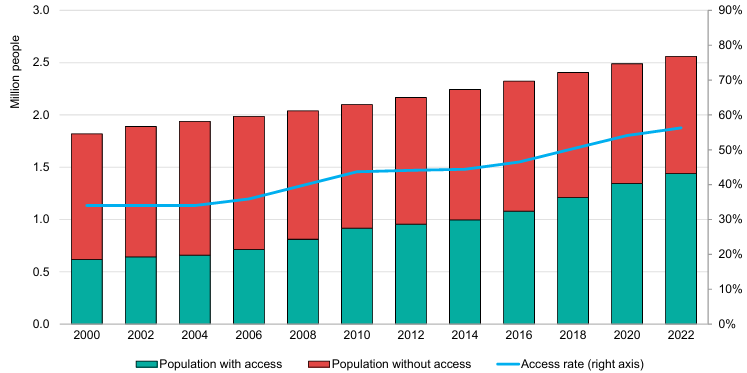Namibia is facing a steep rise in electricity expenditures.
Total spending on purchased power has increased by 25% from approximately N$70.86 billion (US$4 billion) in 2019 to N$86.85 billion (US$5 billion) in 2023.
This surge is largely attributed to the rising costs of electricity imports, which have more than doubled since 2019.
The increase has grown from N$13.90 billion (US$800 million) to over N$31.23 billion (US$1.8 billion) despite a decline in the amount of electricity imported.
A report by the International Energy Agency, titled ‘Renewable Energy Opportunities’, reveals that the depreciation of the Namibian dollar against the United States dollar (USD) has significantly impacted costs, as over 80% of the country’s electricity imports are contracted in USD.
The study added that while electricity imports decreased from 3 042 Gigawatt-hour (GWh) in 2019 to 2 750 GWh in 2023, the USD appreciated by nearly 20%.
This has driven up expenditures in local currency terms.
In addition, the shift in import sources plays a critical role.
Namibia has moved away from sourcing electricity primarily from South Africa to Zambia.
Prices in South Africa were lower compared to those in Zambia.
“The commissioning of the TransCaprivi Interconnector in 2021 has facilitated increased imports from Zambia and Zimbabwe,” said the agency.
This reliance on imported electricity raises concerns about energy security and affordability for consumers.
Unlike most utilities in sub-Saharan Africa, NamPower has implemented cost-reflective rates across all market segments, resulting in the highest electricity prices in southern Africa.
“Passing on these rising import costs to consumers has led to a staggering 30% increase in end-user prices,” the agency added.
Mines Minister Tom Alweendo recently highlighted the delicate balance that Namibia’s electricity sector must strike between expanding access and ensuring affordability.
While the country aims for universal electricity access, the minister acknowledged a significant challenge that many Namibian households face.
Despite being connected to the grid, many households struggle to afford basic electricity usage.
This situation highlights the need for careful consideration in pricing strategies and energy policies to ensure that electricity remains accessible and affordable for ordinary citizens – even as the country works towards broader electrification goals.
The study highlights that significant progress has been made in terms of access to electricity.
By 2023, about 50% of Namibia’s population had access to grid-connected electricity, with an additional 5-6% relying on off-grid solar photovoltaic systems.
This marks a substantial improvement from 2000 when only one-third of the population had access.
However, nearly 45% of Namibians still live without electricity.
The study noted that there is a pressing need for Namibia to diversify its energy sources and reduce dependence on imports.
The report emphasises the importance of investing in renewable energy solutions to enhance energy security and affordability for all citizens.


